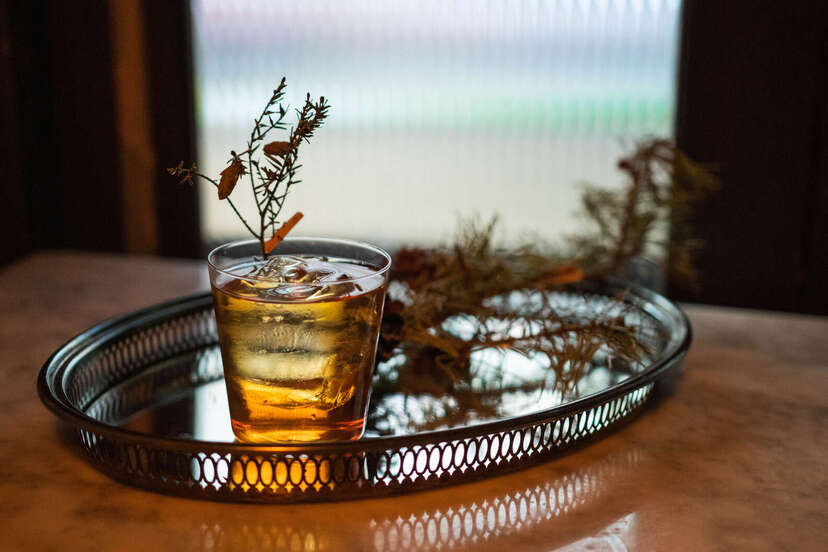How to Milk Wash Cocktails at Home
Bartender Shige Kabashima shares his recipe for an apple pie cocktail.

We have a few pandemic takeaways when it comes to alcohol. Some of us realized we needed to lay off the sauce, either in moderation or permanently. Others perfected at-home bartending skills. We’re simmering simple syrups, pulling ice spheres out of molds, and our bar carts have never been more stacked. But if you want to learn a skill to really impress dinner party guests, consider the milk wash.
While milk washing might sound like some new age-y wellness trend, it’s actually a cocktail technique dating back to the 1700s. The idea is that, similarly to egg whites or aquafaba, a milk-washed cocktail will end up having a fuller, silkier body.
“Ultimately, milk washing removes some acidity and creates a rounded, delicate taste that is slightly lighter than the original cocktail,” says Shige Kabashima, owner and bar director of NR and ROKC in New York City. He primarily features cocktails with a lot of citrus character, which pair well with the restaurant’s menu of ramen and soup curries, and also happen to be ideal candidates for the milk-washing process.
If the idea of adding whole milk to make a cocktail “lighter” seems crazy, you’re not alone. When Kabashima first experimented with the technique on pineapple juice, he couldn’t believe it either. Basically, the process entails adding milk to a spirit mix that contains citric acid or citrus juice, which makes the milk separate and curdle. Normally, he lets the mixture sit in the fridge for a day or two to fully separate, then filters the concoction with a coffee filter. The remaining protein gets activated when shaken.
“After filtration, you’re left with a stable, batched cocktail that is smoother and more delicate with a rounder mouthfeel,” Kabashima explains. “One of the great things about milk washing is that the cocktail can be mixed and clarified ahead of time, then stored in the fridge without spoiling. So if you put the effort into making a batch, you can have a pre-made cocktail ready to go whenever you’d like.”
But the process doesn’t come without its challenges. Obviously, this isn’t a technique suitable for vegan or non-dairy drinkers. (Kabashima says he’s always careful to specify the word milk when it’s used on his menu.) Plus, he advises to be extremely gentle when mixing ingredients.
“Be sure to add the milk in first, and then the liquid you want to clarify,” he says. “Also, there are various ratios that you can refer to, but the ratio I think is the best is 1:6 milk to cocktail. After you clarify, try not to shake the batch too much when storing it in the refrigerator.”
However, the best part of the technique is how you probably already have all the tools at home and it can be applied to pretty much any cocktail, including Kabashima’s Apple Pie cocktail—a mixture of fig-infused brandy, earl gray gin, apple cider, ginger, and apple syrup.
“You can milk wash anything, but it’ll affect different liquors and cocktails differently,” he says. “Ultimately, it’s suitable for any drink that you want to make more delicate.”
Apple Pie Cocktail
Created by Shige Kabashima for NR
Ingredients:
- 1 ounces fig-infused Calvados
- ⅓ ounce earl gray infused-gin
- 1½ ounces apple cider
- ¼ ounce fresh ginger
- ½ ounce house apple syrup (apple cider, vanilla, cinnamon, black pepper, Sansho Japanese pepper)
Directions:
Mix all ingredients and gently milk wash with a 1:6 ratio. Let it sit in the fridge for a day and strain it with a coffee filter the next day. Keep in an airtight container in the fridge. Serve over ice in a rocks glass.